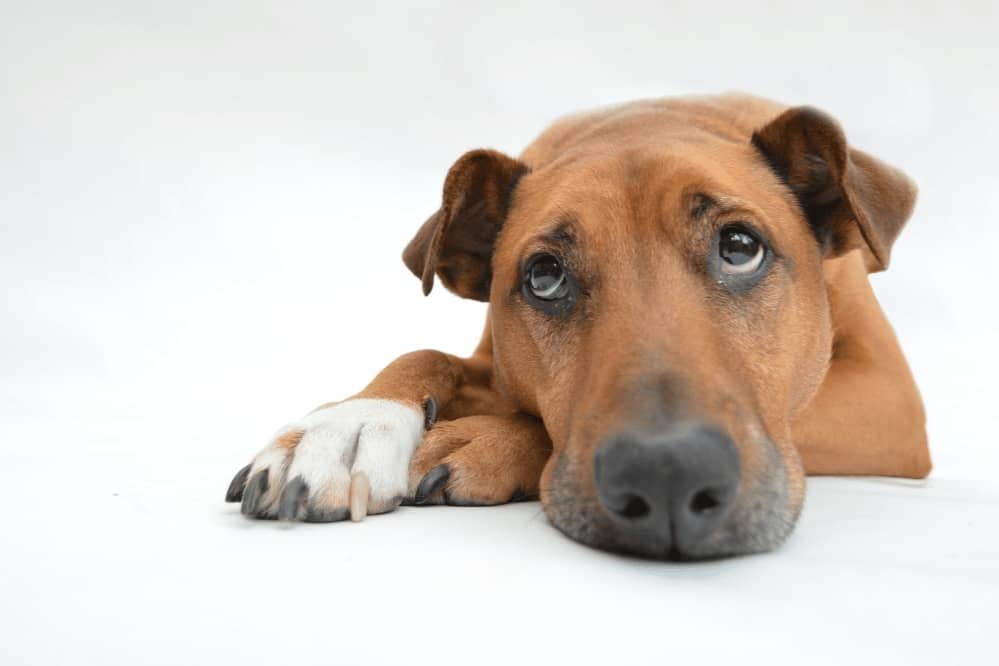Our 4-legged friends can experience periods of depression for a variety of reasons.They suffer from depression because they are stressed, anxious, disoriented or feel neglected. But, how do you detect these signs of depression? How do you help your dog get better?Dog depression is not always easy to interpret but can be followed with lots of attention from the owner.
THE MAJOR CAUSES OF DOG DEPRESSION
Canine depression may be result of various different factors such as the environment of the dog, his personality or his family.
A stressed dog can quickly become depressed. What triggers stress and anxiety at home is usually an event causing an upheaval in the life of the dog, its benchmarks or habits.
The disappearance of his owner, his prolonged absence, the arrival of a new member in the family (human being or animal), a move, a growing lack of attention, less and less frequent exits or reduced length, deprivation and frustration are some of the things that can plunge the dog into a depressed state.
A physical degradation/chronic pain (arthritis, deafness, blindness, heart disorder, chronic dental problems) can induce a depressive or aggressive state in the old dog.
There are also internal causes like:
– Pathological cerebral aging, with degenerative lesions, compared to Alzheimer’s disease. Age-related neuronal losses and aging of nerve cell membranes also lead to inadequate emotional responses.
– Brain tumor, most often associated with other neurological disorders (convulsions, loss of balance)
– Dysfunctions in the neurotransmission of information.
– Hormonal disorder.
SYMPTOMS TO LOOK OUT FOR
Symptoms associated with dog depression gradually settle over time, deteriorating progressively the dog and owner relationship.
Among the symptoms observed are:
– Spatial and temporal disorientation:
the dog can get lost on a familiar journey, even at the bottom of the garden; he comes to wake his owner in the middle of the night to go out; he remains motionless in the middle of a room with his eyes in the air.
– Alteration of learning:
the dog becomes unclean again (while it has always been clean); he no longer obeys orders, no longer answers his name; he no longer curdles around his owner; he follows a stranger in the street.
– Recurrence of infantile behaviors:
the dog begins to explore the environment with its mouth (oral phase), and risk, for example, the intestinal obstruction by ingestion of foreign bodies.
– Chronic depressive state (involution depression):
the dog is agitated, has trouble sleeping: he sleeps during the day, but not at night, during which he wakes up with a start, moans, howls, walks around mechanically. His anxiety is manifested by screams and destruction when he finds himself alone in the house, sometimes by compulsive licking of a part of the body (with the appearance of lesions).
– Hyper-aggressive:
a dog who has always been placid can suddenly become aggressive towards his owner, children, congeners, reversing the usual sequence; he bites first and then grumbles.
HOW TO HELP YOUR DOG OUT OF DEPRESSION?
The early management of behavioral problems in the older dog is essential to improve the psychic comfort of the animal. If an associated organic cause is highlighted (hormonal disorder, cardiac, dental problems, osteoarthritis), its treatment will improve the dog’s condition, or even reduce the symptoms.
1. Medical treatment of complications (see a vet):
It aims to reduce anxiety and restore better sleep. It often uses psychotropic and neurotropic drugs and is associated with vasodilator medications (improvement of cerebral circulation) or with pheromones (chemical substances emitted by animals, which can contribute to appeasement). This treatment is often prescribed for life but must be regularly evaluated and readjusted.
2. Food treatment:
Enrichment of the antioxidant and omega three rations will limit the oxidative phenomena that destroy neurons.
3. Behavioral therapy:
It aims to facilitate communication with the old dog who has sensory problems (talking to a blind dog, for example, to prevent it), but primarily to stimulate the animal. Continue the normal family interactions (grooming, brushing, simple games with a food reward), maintain physical activity (walks), ensure stable spatiotemporal landmarks (avoid changes in walking places, have a regular meal and activity schedules).
Most dogs recover from depression on its own and dogs rarely suffer from long-term depression but still treating your dog as soon as you can should be your priority. There are times when depression can become life threatening condition for dogs. While you do want your dog to be happy and fun pet again, do not lavish your dog with attention and treat while it is recovering from depression because dog might think that its depressive state behaviors are encouraged.

